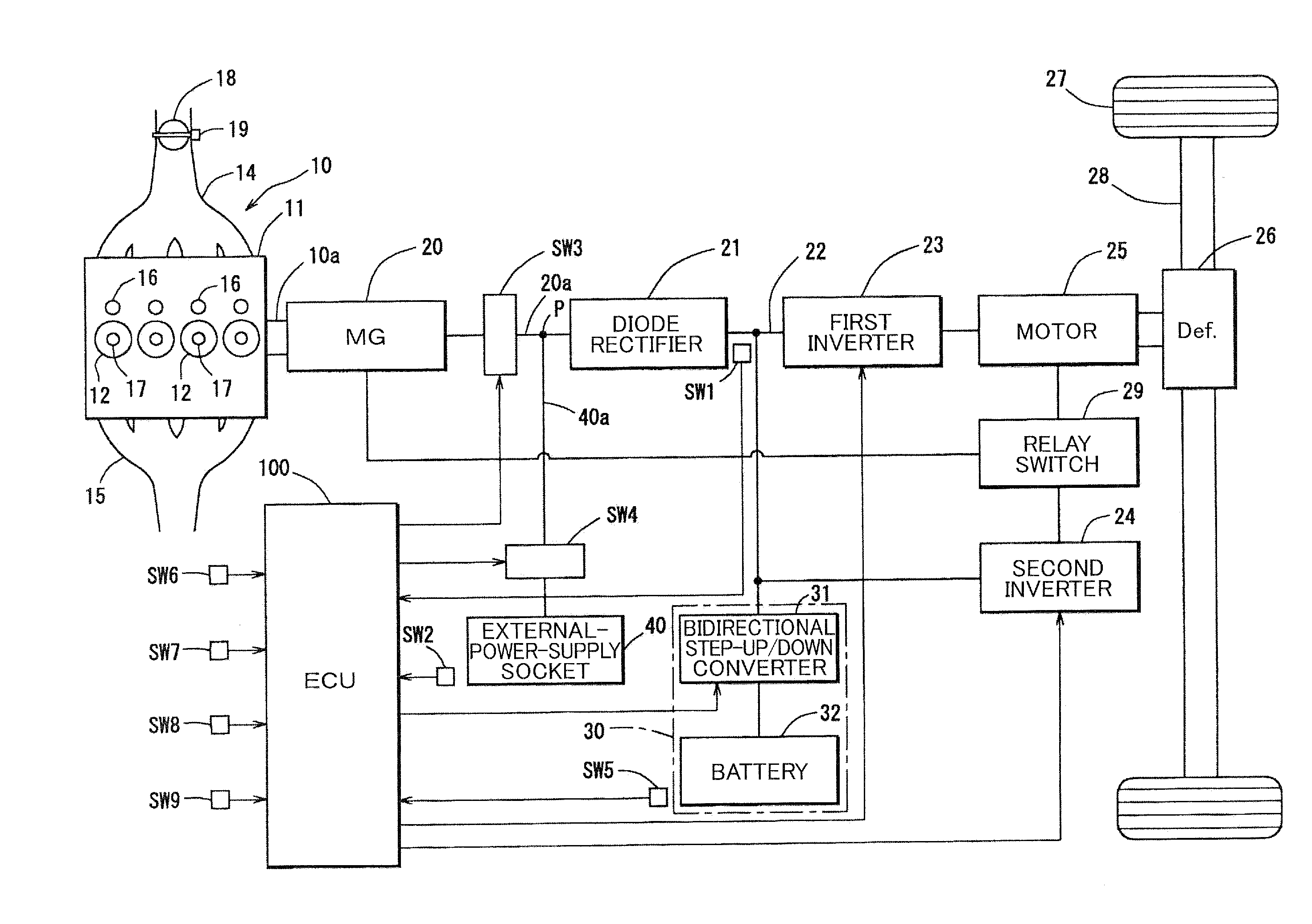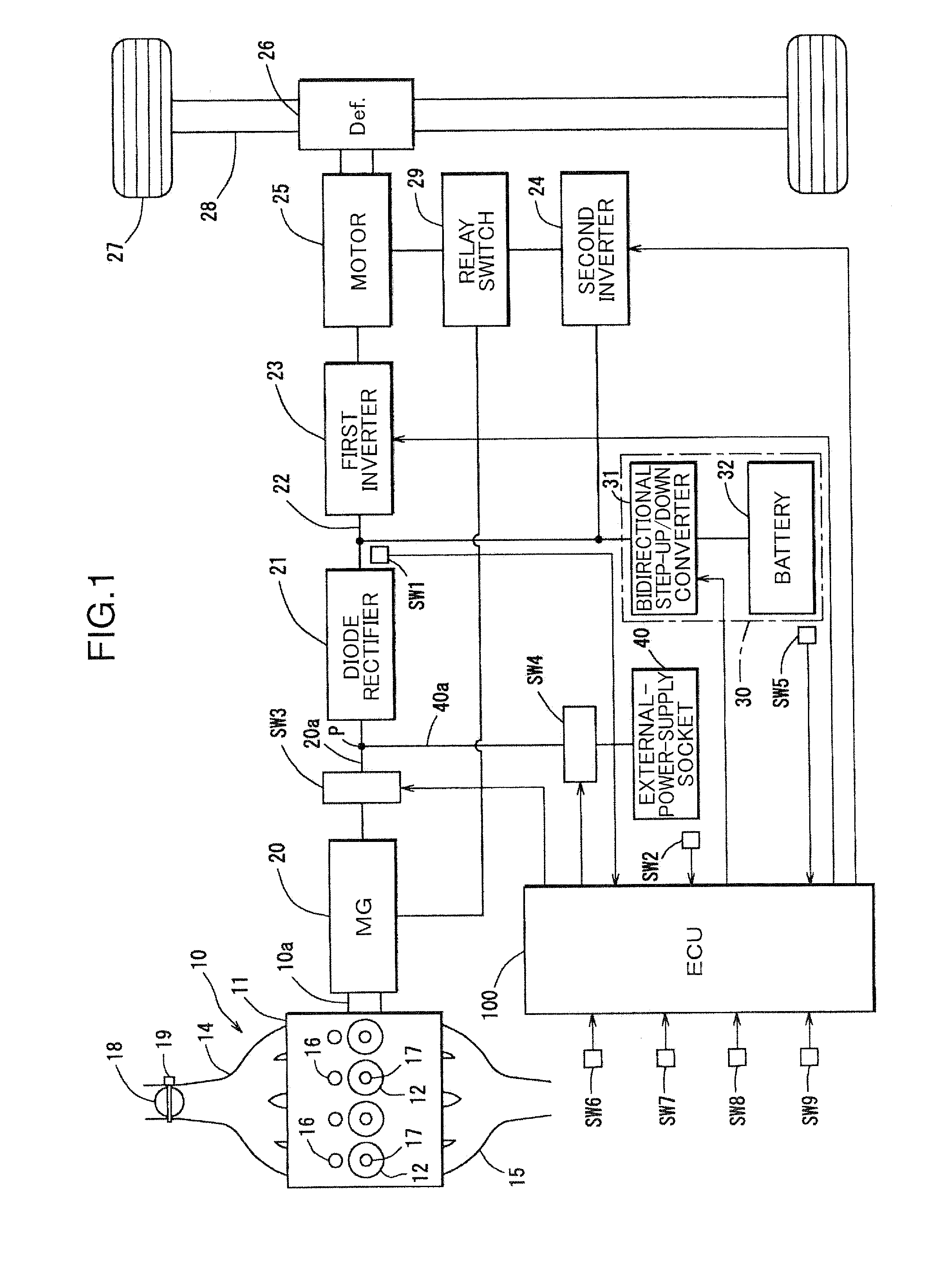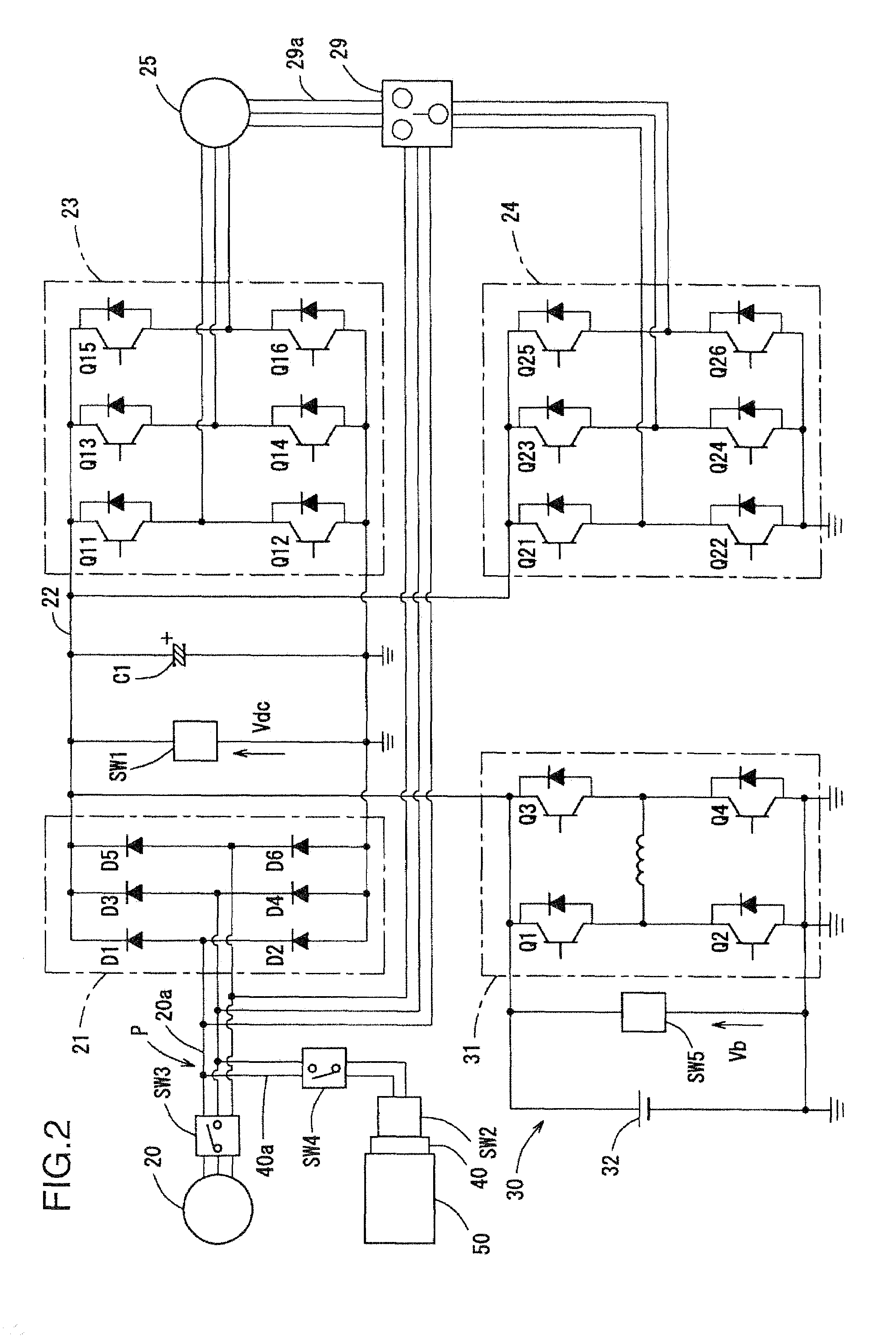Battery-charging method and battery-charging apparatus
a battery and battery technology, applied in the field of battery charging methods and apparatuses, can solve the problems of increasing the size of the electronic packaging substrate, increasing the number of components, etc., and achieve the effect of improving battery charging efficiency
- Summary
- Abstract
- Description
- Claims
- Application Information
AI Technical Summary
Benefits of technology
Problems solved by technology
Method used
Image
Examples
first embodiment
[0025]With reference to FIGS. 1 to 6, a first embodiment of the present invention will be described. FIG. 1 is a schematic block diagram showing a hybrid vehicle equipped with a battery-charging system according to the first embodiment, and FIG. 2 is a schematic diagram showing an electric circuit of the battery-charging system. As shown in FIG. 2, the hybrid vehicle in the first embodiment is a series hybrid vehicle comprising an engine 10, and a motor / generator 20 adapted to be driven by the engine 10.
[0026]The series hybrid vehicle means a vehicle designed such that a generator is driven by an engine to supply electric power to a motor therefrom, and a driving wheels are driven by the motor, as disclosed, for example, JP 2005-204370A. Differently from a parallel hybrid vehicle, in the series hybrid vehicle, the engine is used solely for generating electric power, and a driving force generated by an engine is not mechanically transferred to driving wheels.
[0027]For example, the en...
second embodiment
[0085]In the first embodiment illustrated in FIGS. 1 to 6, the first and second switches SW3, SW4 are interposed, respectively, in the power supply lines 20a, 40a, and the first and second switches SW3, SW4 are turned off and turned on, respectively, when the external power source 50 is connected to the power supply line 40a. However, the present invention is not limited to this configuration.
[0086]In a hybrid vehicle, an operation of charging the battery 32 by connecting the external power source 50 is typically performed when the vehicle is not running, for example, in a parked state. Thus, the battery-charging system may be configured such that the switch SW3 is controllably switched based on a determination whether the vehicle is in a parked state, to allow the switch SW3 to be maintained in its OFF state during parking of the vehicle.
[0087]FIG. 7 is a schematic block diagram showing a hybrid vehicle equipped with a battery-charging system according to a second embodiment of the...
third embodiment
[0098]In the second embodiment, the determination on whether the vehicle is in the parked state is performed based on a detection signal from the ignition switch ON / OFF sensor SW9, and the switch SW is controllably switched based on a result of the determination. However, the present invention is not limited to this manner. For example, in place of the ignition switch ON / OFF sensor SW9, the parked state of the vehicle may be determined based on detecting a state when a shift lever is positioned at a parking (P) range.
PUM
| Property | Measurement | Unit |
|---|---|---|
| alternating current | aaaaa | aaaaa |
| direct-current voltage | aaaaa | aaaaa |
| current | aaaaa | aaaaa |
Abstract
Description
Claims
Application Information
 Login to View More
Login to View More - R&D
- Intellectual Property
- Life Sciences
- Materials
- Tech Scout
- Unparalleled Data Quality
- Higher Quality Content
- 60% Fewer Hallucinations
Browse by: Latest US Patents, China's latest patents, Technical Efficacy Thesaurus, Application Domain, Technology Topic, Popular Technical Reports.
© 2025 PatSnap. All rights reserved.Legal|Privacy policy|Modern Slavery Act Transparency Statement|Sitemap|About US| Contact US: help@patsnap.com



